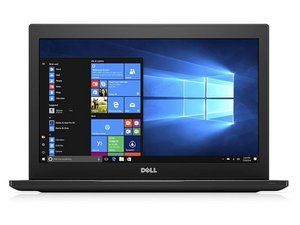Вики, созданная, благодаря помощи студентов
Эта вики выполнена отличной студенческой командой из нашей образовательной программы.
Laptop Dying Too Fast
After a full charge, the laptop does not stay on as long as it should.
Keeping Brightness Too High
Keeping your screen at max brightness for extended periods of time can draw too much power from the battery, causing the internal parts to become hotter than normal. This can cause the battery to drain much faster than it would otherwise. Try lowering your brightness to a normal level, or moving into an indoor space so the backlight is more visible.
Running Too Many Apps at the Same Time
Since the battery provides a fixed amount of power per charge, drawing more power than normal can cause the battery to last for less time than normal. Examples of this are running high-resolution games, having many tabs open at once in one browser, or running many low-intensity apps at once. Try keeping high-intensity activities limited to when the charger is actively plugged in so that your battery does not die faster than normal.
Fan Not Working
Something that can cause the battery to die faster than normal is it being run at a temperature higher than is normal. Usually, the fan would blow air over the hardware to cool it down, but, if the fan is faulty, then the components tend to overheat. See Replacement Guide for Fan.
Battery is Faulty
If none of the above solutions are successful in extending the battery life of your laptop, then your battery is most likely faulty. Therefore, replacing it would be the next possible solution. See Replacement Guide for Battery.
Screen Is Not Working/Black Screen
When laptop is turned on the screen does not load/appears black
Bad connection between graphic drivers and operating system
To reset your graphic driver, hold down all these keys at the same time: the Windows logo key+Ctrl+Shift+B. If that does not work to restore your screen or have it working again, follow these steps: these six steps as another option to resolve this issue. First, disconnect all external devices e.g. USB devices, Bluetooth etc. Second, hold down the power button for 10 seconds to power off your laptop. Third, disconnect your AC adapter (charger) and remove the battery from your laptop. Step four, drain the remaining battery by holding the power button for 60 seconds. Five, place the battery back in and plug in the charger. Finally, Press the power button to check and see that your screen is working.
Graphic driver out of date
Not updating your graphic driver regularly could be the cause of improper screen functionality. Open your browser and go to the website Dell.com/support/home/en-vn. Enter Dell Latitude 5480 into the search bar and continue to the next screen. An option will be visible called Drivers & Downloads, click on it. Click on find drivers. Search under Category and select Video. Scroll down and you will see an Intel HD graphics driver check box, select the box and then press download. Click on the downloaded tab that appears on the bottom left or top right of your browser. A question will pop up asking if you want to make a change to your device, click yes. A Dell update package tab will pop up and click install.
Laptop will not turn on/will not charge
Laptop is not turning on or charging when plugged in or when power button is pressed
Worn power cable
Check your laptop's power cable for wear or tear. When you plug it into your laptop make sure that it is plugged in all the way into the wall as well as into the port of your laptop. If wires are exposed, this could lead to electrical injuries. If you are not able to make it to the store to purchase a new power cable, a temporary fix would be to wrap any exposed wires with electrical tape.
Faulty AC adapter
If your AC adapter is unreliable or damaged, the best option is to invest in a new one.
Faulty Battery
If your power cable and AC adapter are working, then the next issue could be that your battery is no longer functioning. Follow this replacement guide to replace your battery.
Faulty Charging port
If your charger does not appear to have any damage after inspection, but your laptop is not charging when you plug it in, it would be helpful to invest in a new charger to see if the charging cable is the issue. It is highly unlikely that a new charger won’t work, if it is still not showing that your laptop is charging it is highly probable that the issue is your charging port. Review this Replacement guide to replace your charging port.
Not enough storage on laptop
Laptop storage is full
Deleting unnecessary/duplicate files.
Before deciding to change out your ssd, it might be a good idea to make sure you don't have any unnecessary large files like apps, videos, or photos you might not need or want anymore. You could also possibly have duplicate files on your laptop that could be taking up space.
Changing laptop SSD
If you have deleted enough files to make space, it is probably time to make an upgrade and replace the ssd in your laptop with an ssd with larger storage space. See replacement guide for ssd.
Speakers sound static
When playing a video on my laptop, the audio sounds static
Update your audio driver
One of the first things you should do is to make sure the audio drivers on your laptop is updated. You can download the update for your audio driver on the dell website in this link here(insert link).
Blown Speakers
If your speakers still sound distorted, it is time to change out your speakers. See the speaker replacement guide.
Touchpad on laptop does not work
The touchpad is inconsistent, experiencing uncontrollable movements, or not working at all.
Dirty touchpad surface
The touchpad may stop working due to a variety of obstructions that may make it difficult to make good contact between the surface of the touchpad and your finger. To troubleshoot this issue, begin by cleaning the touchpad so that it is free of all dirt, grease, liquids, or food particles that may have been transferred from frequent contact with the fingers and hands, or from its environment.
Touchpad not enabled
The touchpad may not work at all if it is not enabled. Ensure the touchpad is enabled by turning it on by pressing and holding the Windows button on the device, searching for the Touchpad settings, pressing the Tab button to select the Touchpad On/Off Toggle, then pressing the spacebar to switch the toggle to On.
External plug-ins may affect touchpad functionality
The touchpad functionality may be affected by external device connections. To test this, save all data, close out of all programs, then power off the device. Then disconnect any/all connections to speakers, printers, scanners, USB devices, flash drives, external monitors, external keyboards, external mouses, or docks. After all of these are disconnected, restart the computer. If the touchpad functionality returns to normal, reattach each of the previously connected external devices, one-by-one, and test the cursor movement between each connection, in order to find out which external device may have caused the malfunction.
Run a Touchpad Diagnostic Test
If the touchpad is properly cleaned, switched on and enabled, confirmed to be unaffected by the connections of external devices, and it is still not functioning, you may need to run its diagnostics. In this case, you may consider running the Touchpad Diagnostic Test using SupportAssist, which can detect whether the touchpad issues are caused by the operating system or installed software and can be resolved within the device settings, or if the device is in need of further hardware repairs or replacements.


0 Комментариев